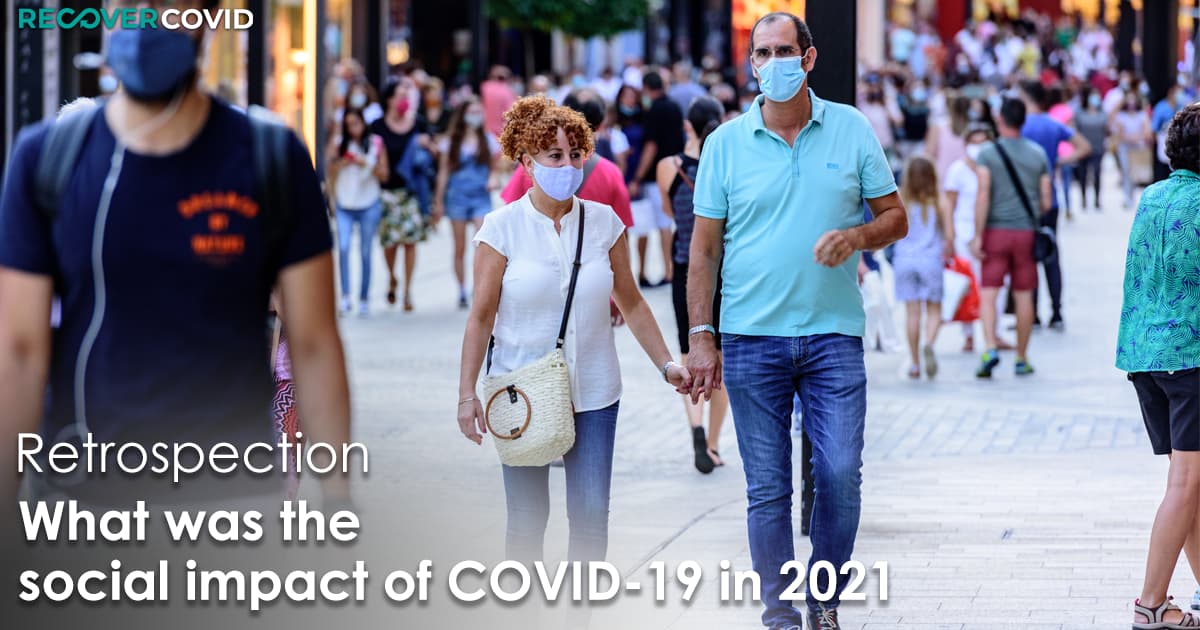What was the social impact of COVID-19 in 2021? (Retrospection)

Given that the coronavirus spreads and prospers during social contact, the social impact of the COVID-19 pandemic has been enormous. Social distancing measures, while necessary, have been harmful in a variety of ways. Many people have faced problems in all areas of their life, like their work, school, and mental health. These issues are far-reaching, and the extent of this impact will likely only be visible with future hindsight.
Table of Contents
Financial Stresses
The first issue that arose with COVID-19 was its financial impact. At the beginning of the pandemic, many were forced to take time off work to social distance; however, the rise of unemployment soon overshadowed what it brought with it. As a result, some businesses could not outlive the pandemic and be forced to close, leaving many without a source of employment. This prevented those affected from being able to pay their bills, and in some cases, even pay for their basic needs.

Housing Problems
Following the financial burden of unemployment and business closures were housing problems. The lack of income in many households meant they could not pay their bills, including rent, and some were even forced out of their homes. While renters and landlords faced the brunt of these problems, those paying mortgages also saw difficulties. Although there hasn’t yet been a dramatic increase in homelessness, this has been one of the major and likely lasting effects of the COVID-19 pandemic.
Delayed Education
As summer turned to autumn, students and educators faced new problems while attempting to navigate social distancing measures. Schools were unable to open in-person, so they turned to online education, for which many were unprepared. While colleges and universities had some infrastructure in place, many other institutions like high schools, middle schools, and elementary schools could not adapt quickly enough. Both students and educators faced new challenges in teaching and learning the materials necessary effectively and efficiently.
Feelings of Isolation
One of the more understated social impacts was the feelings of isolation and alienation those who had to social distance faced and are still facing. Those who were accustomed to and enjoyed public gathers had to find new outlets for relaxing and unwinding. This aided in exacerbating the pressures caused by the other factors mentioned here. Although this will likely subside as the pandemic eases, the lasting effects of this period of isolation on those who already suffer from mental health issues are yet to be fully understood.
Watch MD Roger Seheult’s tips on how to cope stress and anxiety
Halt to Traveling
On a superficial level, the travel bans enacted in many countries put an immediate stop to many tourist industries and vacation times. However, this measure also prevented many families from reuniting. Those who were unlucky enough to be stuck in a different country found difficulty traveling back home to be with their loved ones. Expats and international students also faced issues with not attending their work or school, creating problems in their visa and immigration status. Even public transportation could be problematic from the standpoint of pandemic.
Mayo Clinic has very interesting approach on how to travel safely during pandemic
The COVID-19 Losses
Although many of these issues will undoubtedly have a lasting impact on society as a whole, it is essential to acknowledge the loss of life that accompanied this pandemic. By the time the pandemic ends, it will likely have taken over a million lives with it internationally. This has untold consequences for the families and friends left behind.



